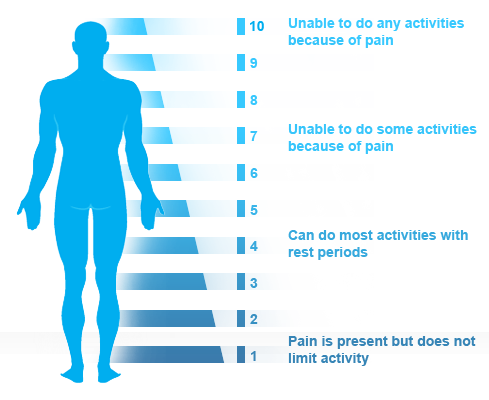Understanding Pain
Pain is one of life's necessary evils. The sensation varies person-to-person, but can generally be defined as an intense, unpleasant feeling triggered within the nervous system as a response to damaging stimuli. Pain serves as the body's natural alarm system, alerting your brain of impending hazards and motivating you to withdraw from dangerous situations. Without it, individuals could severely hurt themselves without even knowing it or overlook serious conditions that may require medical attention.
Dealing With Pain
Pain can vary in feel and intensity. Symptoms can be sharp, dull, burning or tingling, and can intermittently come and go or persist over longer periods of time. Sometimes, pain remains despite the apparent healing of an injury or can arise even in the absence of any detectable stimulus, damage or disease. If left untreated, this chronic or persistent pain can have dramatic negative effects on an individual's quality of life. If you are experiencing pain that has persisted longer than a month or is growing in intensity, it is important to talk with your doctor. You can easily start this conversation by filling out a quick self evaluation.
Self Evaluation
Start NowTypes of Pain
Acute Pain
Acute pain begins suddenly in response to something specific like a surgery, and injury, child labor or an infection. It is usually sharp in nature and lasts only for a temporary period of time - typically no longer than six months once the problem has been treated or healed. Unrelieved, acute pain can lead to longer lasting chronic pain.
Chronic Pain
Chronic pain lasts for longer periods of time than acute pain and can persist despite the fact that an injury has healed. Pain signals remain active in the nervous system and can affect a person's physical and emotional wellbeing. These intersecting issues often amplify the effects of chronic pain, dramatically impacting a person's quality of life. Types of chronic pain can include headaches, joint pin, lower back pain, arthritis and ongoing pain from previous injuries. Other kinds of chronic pain can include tendinitis, sinus pain, nerve pain and psychogenic pain (pain not due to past condition).
Measuring Pain
To seek treatment for chronic pain, your doctor will want to know how severe your pain is. Doctors rely on pain scales to get a better sense of how excruciating pain might be. This process typically asks you to self-rate your pain on a 10-point scale that measures between being completely pain free (0) to weeping in agony (10).

This is a helpful diagnostic to understand the severity of your condition, but it is important to know that all pain is personal, and therefore subjective. What might be unbearable level-10 pain for one person may only be a 6 for another. For this reason, it's good to be as clear and descriptive about your pain to ensure that the doctor has a complete sense of how your pain is affecting you.
Treating Pain
- Drug treatments - Includes over-the-counter medications, such as Aleve, Motrin and Tylenol, to stronger prescription medications such as opioids, muscle relaxants and antidepressants
- Injections - Steroidal injection applied in the affected area to reduce the inflammation of nerve roots
- Pain/Nerve blocks - Application of a local anesthetic into nerve root to disrupt pain signals to the brain
- Advanced Treatments - Electric stimulation, radiofrequency and other surgical treatment options
- Physical Therapy - Therapeutic exercise to restore or facilitate pain-free function
- Surgery - Medical operation to correct conditions causing persistent pain
- Behavior Modification - Altering behaviors, habits and mannerisms that can lead to intensified pain